Heading out the door? Read this article on the new Outside+ app available now on iOS devices for members! Download the app.
Ice climbing is a high-stakes sport. Do it right, and you’re in for a meditative cruise with just the right level of spice. Do it wrong, and you’ll be left spooked, shivering—or worse. The difference often boils down to your experience level. But right after that comes your gear. When you’re 100 feet off the ground, pinned to a silvery ribbon of ice by nothing but four blades of steel, you need absolute trust in your equipment. But how can you tell which products to rely on? That’s our job.
This season, we tried out 31 different pieces of ice climbing gear. Some turned out to be overengineered, overpriced, or poorly built. Others proved thoughtfully designed and dependable in a range of winter conditions. Over several months, dozens of miles, and thousands of vertical feet of testing from Colorado to British Columbia, we sorted out the latter. Those are the pieces below: the best new ice climbing gear for 2025.
At A Glance
- Black Diamond Hydra Ice Tool ($310)
- Scarpa Phantom Tech HD ($899)
- Trango Kestrel Ice Tool ($500)
- Patagonia M10 Hardshell Pants ($279)
- Petzl Sitta Harness ($175)
- Blue Ice Harfang Tech Crampons ($230)
- How to Choose Ice Climbing Gear
- How We Test
- Meet Our Testers
If you buy through our links, we may earn an affiliate commission. This supports our mission to get more people active and outside. Learn more.
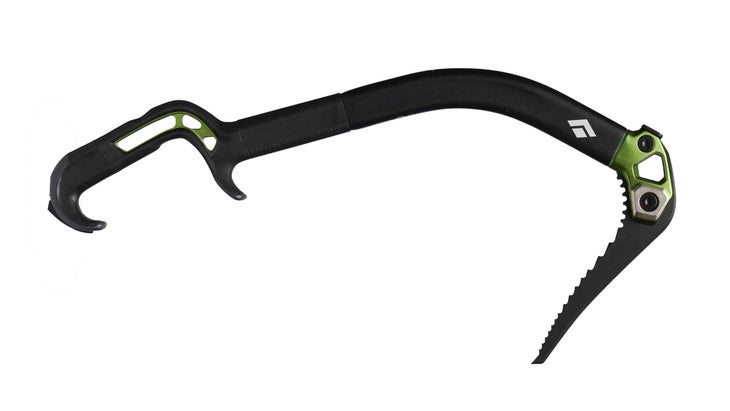
Black Diamond Hydra Ice Tool
$310 at REI $310 at Black Diamond
Weight: 1.3 lbs (per tool, with pick)
Pros and Cons
⊕ Modular head weights
⊕ Ultra-sharp picks
⊕ Adjustable handle size
⊗ Geometry is isn’t aggressive enough for seriously overhung terrain
An impeccably balanced swing, ultra-precise pick, and a high degree of modularity make the Hydra a new category leader—and our tool of choice for both moderate and vertical ice this season.
For starters, there’s the head-weight system. Most tools come with just two options: weighted or unweighted, which let you adjust the weight of the tool’s head and therefore its swinging momentum. But the Hydra’s interchangeable head-weight system let us choose between two screw-on weights (either a 5-gram aluminum weight or a 40-gram tungsten weight) for each side of the tool. That’s three weight options total. That allowed us to dial-in our perfect balance for every kind of terrain. Between that and the razor-thin picks—just 2.5 millimeters wide at the tip, as opposed to the 3- to 3.5-millimeter industry average—these tools place like a dream. “They easily handled everything from a sketchy, thinly delaminated WI 5 pitch on Cody, Wyoming’s Mean Streak, to the steep, engaging features of Legal at Last (WI 6),” reported lead tester Maury Birdwell.
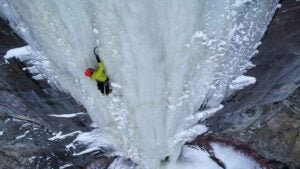
The Hydra’s handle is another highlight. A slight offset protected testers’ knuckles from bashes on bulging ice, and a durable, insulating rubber coating guaranteed a good grip. Testers also appreciated the optional handle spacers. “I used the Hydra with both thin dry-tooling gloves and with thick, three-finger mitts over a season of testing in British Columbia,” said Climbing digital editor Anthony Walsh, who took them out on a variety of different crags and ice flows. “I certainly appreciated being able to adjust the handle size to accommodate the difference.”
While this is an excellent all-around tool, some testers found the handle geometry insufficiently aggressive for moving through roofs or transitioning onto ice daggers, which Walsh discovered on the crux move of Dark Nature (WI 5+ M5/6) at Lake Louise, Alberta. Ultimately, we prefer the Hydra for steep, technical ice—but not for overhung mixed lines. Read our longform review of the Hydra here.

Scarpa Phantom Tech HD
$899 at Backcountry $899 at Scarpa
Weight: 1.75 lbs (per boot, size 42)
Sizes: Unisex 37-46 (half sizes); 47-49 (whole sizes)
Pros and Cons
⊕ Top-tier durability
⊕ Technical aptitude
⊕ Out-of-the-box comfort
⊗ Not quite warm enough for extreme-altitude objectives
We only thought Scarpa’s fan-favorite Phantom Tech boot couldn’t get any better. Then the Phantom Tech HD came along in 2023. The new boot offers the same level of climbing precision as the old version, but with more warmth, durability, and comfort—at just a 2.5-ounce weight penalty. Over an action-packed season in Colorado, Wyoming, and Canada, the Phantom Tech HD became our testers’ go-to for everything from overhanging mixed routes to steep, techy ice.

The improved warmth comes courtesy of a body-mapped insulation strategy. Micropile, aerogel, and PrimaLoft Gold Eco (a premium synthetic insulation with comparable insulating power to down) are strategically placed to prioritize warmth around the toes and ensure uninhibited articulation elsewhere. As a result, the Phantom Tech HD both kept our feet frostbite-free in negative 22 degrees Fahrenheit (albeit with vapor barrier socks) while ice climbing near Field, British Columbia, and ensured a natural, comfortable gait on long approaches. (That said, the warmth threshold ends around there; we wouldn’t quite trust these for spring or winter trips to Denali.)
“The rockered outsole has a trail-runner-like feel,” Climbing digital editor Anthony Walsh said, noting the grippy Vibram rubber and high-traction lugs. “And the clever, three-part lacing system makes it easy to isolate where I want my foot to be tightly supported.” The lacing system let us ratchet down our heels—boosting security and eliminating heel-lift on steep lines—without compromising toe circulation. “I’ve hiked and skied many miles in ice climbing boots over the years, and the Phantom Tech HD is without a doubt the most comfortable I’ve used,” Walsh said. And even after a full season of chimney scuffles, long boot-packs, and mixed climbing, our sample pair shows no signs of wear or delamination.

Trango Kestrel Ice Tool
$500 at Backcountry $500 at Trango
Weight: 1.0 lbs (per tool, with pick)
Pros and Cons
⊕ Light weight
⊕ Good impact-dampening
⊕ Moderate geometry ideal for vertical ice
⊗ Small handle size
⊗ Expensive
In the past, we’ve steered clear of carbon tools, which, though much lighter than aluminum models, often feel rigid and chattery, especially on hard ice. But the Kestrel was the first carbon-fiber axe that both lived up to its featherweight promise, and provided a comfortable swing. The secret is a Kevlar core, which provides a little more give than a traditional carbon shaft, dampening impact forces. “It swung fluidly,” said climber Seena Vali after a weekend of testing in Ouray, Colorado. He added that the handle felt surprisingly comfortable and grippy for a carbon tool, thanks to a textured paint that coats the shaft.
The picks each taper down to 3.5 millimeters, and the weight differential between the steel picks and the featherweight shaft is enough to keep the tool feeling balanced and powerful. As a result, the Kestrel offers an extremely precise swing, even without pick weights.
“With other carbon tools, I’ve had to adjust my technique to compensate for the rigidity,” reported category manager and ice climber Corey Buhay. “But this one hammered straight into the ice—perfect sticks every time.”
She added that the tool performed best on vertical to slightly overhanging ice, ideally WI 3+ to WI 5, thanks to the shaft’s moderately aggressive curve. On lower-angle routes, the sharp angle made swinging feel awkward. One other caveat: Large-handed climbers found the handle a little cramped with thick gloves on and would have preferred more room between the top and bottom pinky rest. But most testers loved the handle’s narrow diameter, which provided a more secure grip than some other tools we’ve tried.
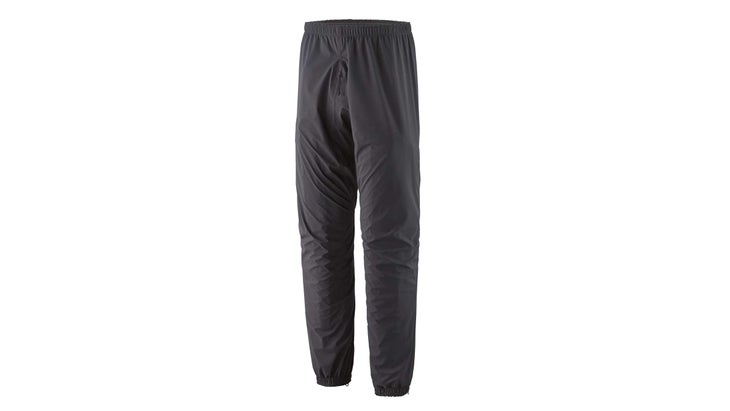
Patagonia M10 Storm Pants
$279 at Backcountry $279 at Patagonia
Weight: 8.5 oz
Sizes: men’s XXS-XXL (the women’s counterpart is the M10 Storm Bib)
Pros and Cons
⊕ Surprising stretch and durability
⊕ Superior range of motion
⊗ No women’s-specific version
The M10 Storm Hardshell offers hands-down the best range of motion we’ve ever experienced in an alpine climbing pant. Thanks to a roomy fit, gusseted crotch, and slightly stretchy fabric—a mix of ripstop nylon, proprietary waterproof laminate, and a slick jersey backer—we were able to step high and wide without feeling constricted—a refreshing departure from the Euro-style, slim-fit trousers that have taken over the market in recent years.
“While transitioning from a panel of limestone to a hanging ice dagger, I stemmed my legs as far as I could between the two mediums and felt zero resistance,” reported Climbing digital editor Anthony Walsh. Some testers reported doing a full split just to test out the mobility. No torn crotches yet.
The rest of the layout is smart but simple. The thigh pocket, big enough to fit a smartphone, and fly are both positioned to remain accessible even with a harness on. “The zipper is on a diagonal rather than vertically-oriented like most other pants, so you can relieve yourself without a harness’s tie-in points or belay loop getting in the way,” Walsh reports. Elasticized cuffs keep moisture out—something we appreciated when spring conditions left our ice pitches streaming with water.
We loved how waterproof the M10s were, too. “I tested the M10s on some of the wettest pitches of my entire season,” said Walsh. “My ‘waterproof’ gloves soon wetted out, and my face had a steady drip of water coming off my nose, but under the M10 pants, I stayed 100 percent dry.” Credit goes to a lightweight, breathable, proprietary membrane and a PFCs-free DWR (durable water repellent) that boasted best-in-test longevity. After eight straight days of fighting up scrappy mixed lines in the Canadian Rockies, both the waterproofing and the fabric remained intact.
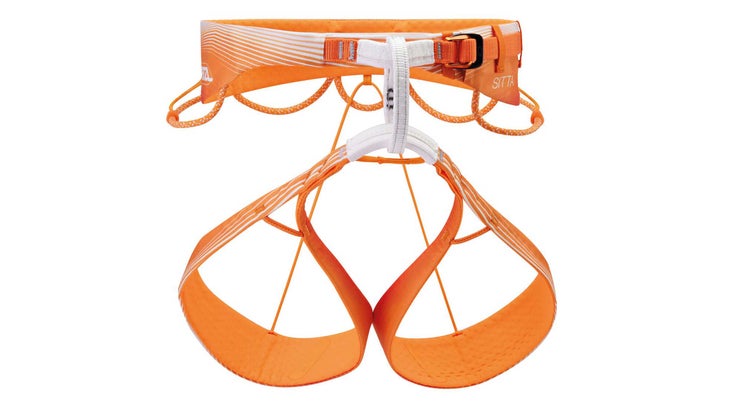
Petzl Sitta Harness
$175 at REI $175 at Backcountry
Weight: 9.7 oz (M)
Sizes: XS-L
Pros and Cons
⊕ Light weight
⊕ Superior packability and durability
⊗ Limited adjustability
⊗ Minimal padding
Our favorite packable harness for light and fast objectives, the Petzl Sitta crams all the features you need for hard ice climbing and mountaineering into a sub-10-ounce package. High-modulus polyethylene fibers reinforce both the leg and gear loops, providing enough rigidity to make this lightweight harness functional on the wall. Broad front gear loops (and three other accessory loops) fit a full rack of alpine gear, and two lateral ice-clipper slots kept our screws organized on WI 5 ice leads.
After months of testing on everything from overhung dry-tooling routes in Colorado’s Vail Amphitheater to steep ice and moderate mixed routes in British Columbia, we were impressed with just how little space the Sitta took up—about the size of a bike bottle—and just how much abuse it withstood. Neither knee bars, hip scums, nor beached-whale mantles were able to scuff the polyester and nylon materials, even while fighting up rough M6 chimneys in the Canadian Rockies.
While testers with larger thighs grumbled at the non-adjustable leg loops, category manager Corey Buhay preferred them. “I loved the streamlined silhouette for tricky ice and harder dry-tooling, where I generally want as few buckles and straps in my way as possible,” she said. The loops are also auto-balancing (the leg loops connect via a rudimentary pulley system rather than having two distinct straps). That means we never had to stand around picking at our butt straps to even them out.
While the spartan design had its benefits, we quickly discovered that the Sitta isn’t sufficiently cushioned for hanging belays on steep multi-pitch lines.
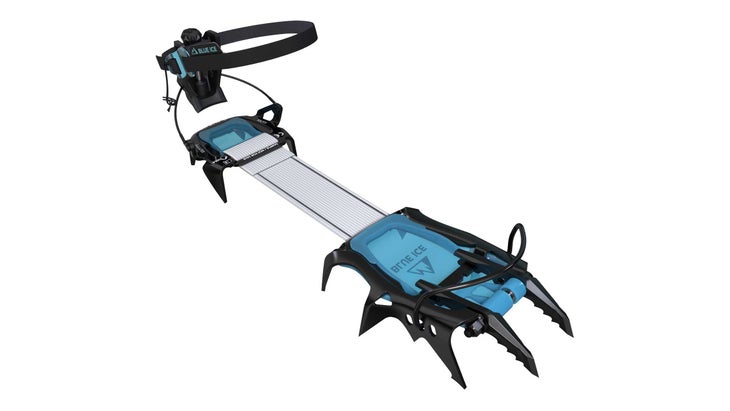
Blue Ice Harfang Tech Crampons
$230 at Backcountry $240 at Blue Ice
Weight: 1.4 lbs (per pair)
Sizes: one size
Pros and Cons
⊕ Best-in-class packability and adjustability
⊗ The flexible sole falters on super-hard ice; we prefer it for temperatures above 5°F
If you’ve ever opened your pack at the base of a climb to find a shredded back panel or puffy, you know the worst part of using crampons is often storing them. The Blue Ice Harfang Techs eliminate that issue by folding in half, which let us pack them into our helmets for puncture-free portability.
The secret? Blue Ice replaced the customary steel center bar with a fabric strap composed of ultra-high molecular weight polyethylene (UHMWPE)—the generic name for Dyneema. The two-inch-wide replaceable strap sacrifices little durability and is both highly flexible and lightweight: The pair clocks in at a mere 1.3 pounds. Not bad for a steel crampon.
This construction doesn’t just enhance packability, either: Because the strap ratchets through a buckle, it also allows for infinite adjustment, letting climbers of all shoe sizes dial-in a perfect fit. (Contrast that with steel bars, which have only so many size settings.) The Harfang Techs also have a knob on the heel bail, letting us make micro-adjustments on the fly.
Some testers reported that the UHMWPE strap tended to relax and loosen throughout the day, especially on the hard, north-facing ice of B.C.’s Stanley Headwall. But climbers in warmer environments had no issue. “I climbed M8 and WI 6 with no problem at all in Ouray and Vail,” says lead tester Maury Birdwell. “The steel also held up nicely and required no sharpening after 10 days of sustained use on ice and rock.” If you’re planning to kick into concrete-hard alpine ice, consider bringing a traditional crampon. Otherwise, the Harfang Techs should do the trick.
How to Choose Ice Climbing Gear
Where to Begin?
Your first purchase should be a pair of reliable mountaineering boots. While hardware like crampons and ice tools are relatively straightforward to rent or borrow, boots and apparel tend to be less so—and more critical to your comfort on the ice. Fit is critical. Purchase your boots too tight, and you’ll run the risk of cold toes or even frostbite. Too loose, and you’ll suffer from blisters on the approach and the dreaded toe-bang on the wall. While you can find a nice pair of used boots for $200 to $300, we recommend buying a new pair if that’s what it takes to find a perfect fit. Head to your local climbing shop, tell the sales associate about your objectives and experience level, and they should guide you to the perfect pair.
Next comes clothing. Thin, warm merino wool tends to be best for both socks and baselayers; it traps heat and wicks moisture without leaving you feeling overheated or encumbered. Hardshell pants—like the Patagonia M10—are critical to staying dry on weeping flows. Ditto for a hardshell jacket. Pack a warm baselayer top and a wicking, active midlayer like a synthetic fleece or wool sweater so you can finetune your insulation for the conditions.
Another piece of must-have gear is gloves. Most ice climbers carry two to three pairs with them at any given time. Wet hands are cold hands, so the number-one tip for staying comfortable in icy conditions is keeping those mitts dry. Like boots, it pays to buy new if that’s what it takes to find a perfect fit. At the very least, you’ll need a dextrous, medium-weight, not-too-tight glove for climbing, and a heavy-duty glove for belaying and emergency wear.
The final touch to your kit should be a big belay parka. A hood and interior glove pockets are nice, but the most important factor is warmth. Standing around belaying in the snow can be downright frigid. The bigger and warmer your belay puffy, the happier you’ll be.
Can I Use My Rock Climbing Gear?
While you can use your rock-climbing harness, rope, and helmet for ice, it pays to level up as you get more into the sport. Harnesses like the Petzl Sitta are compatible with ice clippers—big plastic carabiners that let you stash screws or an ice tool on the fly. Winter-specific helmets are designed to both keep your head warm and deflect torpedoing chunks of ice, and winter-specific ropes are thoroughly dry-treated to reduce the odds of freezing mid-pitch.
Can I Buy This Gear Used?
We recommend buying safety essentials—like ropes, harnesses, and helmets—new. It’s hard to tell if use gear has been compromised. And when it comes to saving your life, trustworthy safety gear is the cheapest insurance policy you’ll ever buy. For most other items, consider shopping secondhand; used gear can help you get a feel for what you like and don’t like before you shell out for a spendy new kit. Check out online forums like MountainProject.com, GearTrade.com, and even eBay. Craigslist and Facebook Marketplace can also be great options if you live in an outdoorsy town.
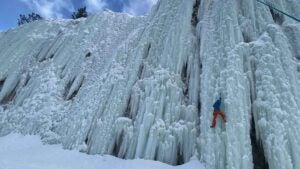
How We Test
- Number of testers: 5
- Number of products tested: 32
- Miles approached: 40
- Vertical feet climbed: 22,000
- Coldest temps encountered: -22°F
- Highest winds endured: 37 mph
Gear reviews are highly subjective, but we do our best to combat that by taking a slightly more scientific approach. At the beginning of each season, we wade through sheaves of PR requests, consider the specs and promise of each one, and then carefully select the gear we deem fit to test. Then, we do our utmost to get each piece in the hands of as many testers as we can—and in as varied conditions as we can manage.
This year, testers picked and kicked their way up everything from moderate mixed lines in Ouray, Colorado, to steep WI6 pitches on British Columbia’s Stanley Headwall. We belayed through blizzards, swung into bullet-hard ice, whooped over perfect sticks, and cursed through some of the wettest pitches of our lives. At the end of the year, we compared notes and selected only the best gear to review. Those are the products you’ll see here.
Meet Our Testers
Maury Birdwell
Maury is an attorney and climber based in Boulder, CO. He has had the good fortune to climb and establish routes around the world. Some highlights include freeing the original Royal Robbins line on Mount Hooker in the Wind River Range with Jesse Huey (Original Sin, 5.12+), the first free ascent of Armageddon (5.12+) on the North Howser Tower in the Bugaboos, Canada, and setting the car-to-car speed record for climbing (solo) the Diamond of Longs Peak. In 2012 he co-founded the Honnold Foundation with Alex Honnold – perhaps his greatest personal “send” to date.
Corey Buhay
Corey is a freelance writer and editor based in Boulder, CO. She is a former member of the U.S. Ice Climbing Team and has climbed up to WI5 and M12- around the Colorado Rockies. She is a volunteer climbing instructor at The Ice Coop, Colorado’s only dedicated ice-climbing gym, where she does much of her training. There, she’s fortunate to be a member of a vibrant and tight-knit local ice climbing community—where willing testers and fellow gear nerds are easy to come by.

